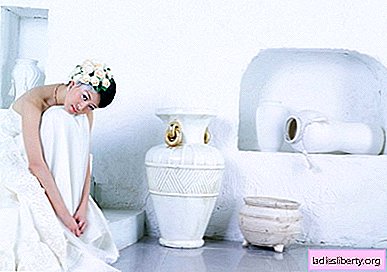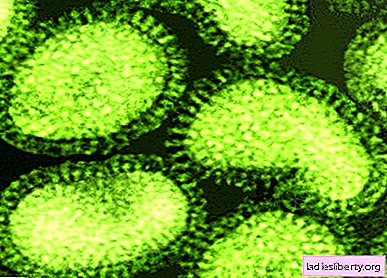
Since ancient times, marine fish known as dorado have been known in Mediterranean countries. Even in ancient Rome, this fish began to be bred in special ponds with salt water, and even depicted in frescoes and vases.
Dorado has a pleasant, delicate taste, it also grows quickly and is highly appreciated by lovers of healthy nutrition for its low calorie content.
Summary of Dorado Fish
Dorado (Dorado, Aurata, Golden Spar or Redfin) - from the Spanish word dorado (golden). Golden - because the fish on the forehead, between the eyes there is a characteristic strip of golden color. A very common fish in the waters of the Mediterranean Sea, in the eastern part of the Atlantic Ocean, small flocks are found off the coast of Crimea, in the Black Sea.
It grows up to 70 cm and weighs up to 17 kg. The body is oval, flattened laterally, head with a steep profile and lower mouth. The mouth and eyes are relatively small.
Young individuals keep shallow water, up to 30 m deep, larger, adults, as a rule, keep depths no more than 50 m.
The color is silver gray.
It is a hermaphrodite, sex change can be due to social and hormonal factors. Up to two years, males develop, with the onset of the third year of life, the sex can be replaced by a female.
Artificial breeding dorada is widespread in Italy, Greece, France, Spain, Turkey. They grow it in lagoons and pools on special farms. Fish is valued for food, weighing about 500 g; it can be found on sale within 300-600 g. In about a year and a half, it grows to the required size. There is also a "royal" variety, it has a pinkish tinge of meat and a more refined taste.
It is highly regarded in Mediterranean cuisine and European chefs. The Greek goddess Aphrodite also considered the dorado sacred.
Dorado Harm
First of all, it should be noted that the meat of this fish does not directly harm. Properly prepared, fresh fish does not have any contraindications, with the exception of allergies or individual intolerance in a particular person to any component.
It should be understood that eating rotten or stale fish can lead to poisoning, and frozen meat simply will not bring the desired beneficial effect. Also, sometimes, meat can be processed with preservatives to increase shelf life. Be careful and choose only fresh fish.
Advice! Small bones are present in the fish, therefore, before giving them food to small children, all bones should be removed.
How to choose a dorado
Choosing a fish is pretty simple.
Firstly, you need to make sure that it is a dorado in front of you. She has a characteristic golden streak between her eyes and a dark spot above the gills.
Secondly, check the gills - in fresh fish they are dark red in color.
Thirdly, if you put a dorado in the palm of your hand, then the body of the fish: the head or tail should not sag - the meat of a fresh dorado is elastic.
Also, if you press your finger on the fillet, then the dent should straighten out quickly. The listed symptoms are common when choosing any fish.
Give preference to larger individuals (weighing more than a kilogram), it is more likely that such a fish was caught in the sea, where it had a wider diet. But, despite this, small, farm dorado are also delicious fish and are not much different from wild relatives.
You can store fish in the freezer, pre-gutting and washing it. But it’s better to eat fresh.
Useful properties of dorado fish
Fish is always an important source of nutrients, it provides numerous benefits for our health and helps maintain a balanced and healthy diet.
So, the main feature of the dorado is its diet. It is caused by extremely high low calorie due to the low content of carbohydrates and fats. On average, 100 g of dorado contains up to 70-100 kcal. It is a very good source of proteins with high biological value, because they contain certain amino acids necessary for life (methionine, lysine, tryptophan), as well as vitamins and minerals. It is rich in polyunsaturated fatty acids omega-3 and omega-6. They are closely related to the prevention and treatment of a large number of cardiovascular diseases and their risk factors (cholesterol and triglycerides). Contains water soluble vitamins (such as B1, B2, B3 and B12) and fat soluble (vitamins A and D).
The fact is irrefutable: the dorado is able to take one of the main positions in the food list.
Finally, fresh dorado is an important source of minerals, especially sodium, iron, zinc, manganese, potassium and magnesium, and if you chew and swallow the bones, you can get an additional portion of calcium - fortunately, the skeleton of the dorado is quite soft.
• Potassium it is necessary for a person to normalize blood pressure and the work of the heart muscle. It is useful for the brain, normalizes the functioning of nerve cells, stimulates thought processes.
• Manganese helps the human nervous system, the regulation of the gastrointestinal tract and the absorption of trace elements in the body.
• Iron stimulates the formation of red blood cells - blood cells that carry oxygen throughout the human body.
• Zinc useful for the human immune system, formation, growth and development. For this reason, dorado is so useful for children.
Another merit of dorado is its high iodine content. It is iodine that is necessary for the formation of thyroid hormones, which are very necessary for normal activity and regulation of the functions of the human body.
It is important to know! The benefits of dorado, like any other fish, will be noticeable only with systematic eating (at least twice a week).
How to cook dorado
Dorado can be cooked in completely different ways. It all depends on your imagination and skills. This fish is fried, stewed, grilled, baked in sleeves or foil, boiled and even eaten raw.
There are a huge number of various recipes. It goes well with any products, vegetables (potatoes, carrots, asparagus, tomatoes, etc.) and side dishes (for example, pasta), sauces.
Due to its taste, fish can be cooked with a minimum set of spices, the use of which during the diet is severely limited.
However, the addition of Provencal herbs, rosemary, thyme will add piquancy to the fish and some Mediterranean charm. The only thing you should not do with a dorado is to overcook it. In this case, most of the useful properties and qualities will be lost.
A famous dish is dorado baked in salt. The carcass is literally wrapped in sea salt, and baked. Sometimes, during serving in restaurants, the dish is set on fire for spectacular effect.
It is noteworthy that the pinkish, raw meat turns white during cooking, has a rich sweet aroma, firm and yet delicate texture.
Obviously, dorado is a welcome fish for human consumption. The only thing that may limit its use is price. This is especially true for areas remote from the sea coast. Otherwise, dorado is a recommended, easily digestible product.











